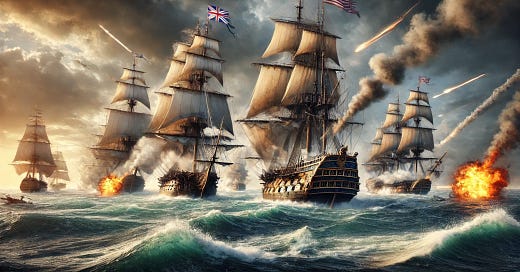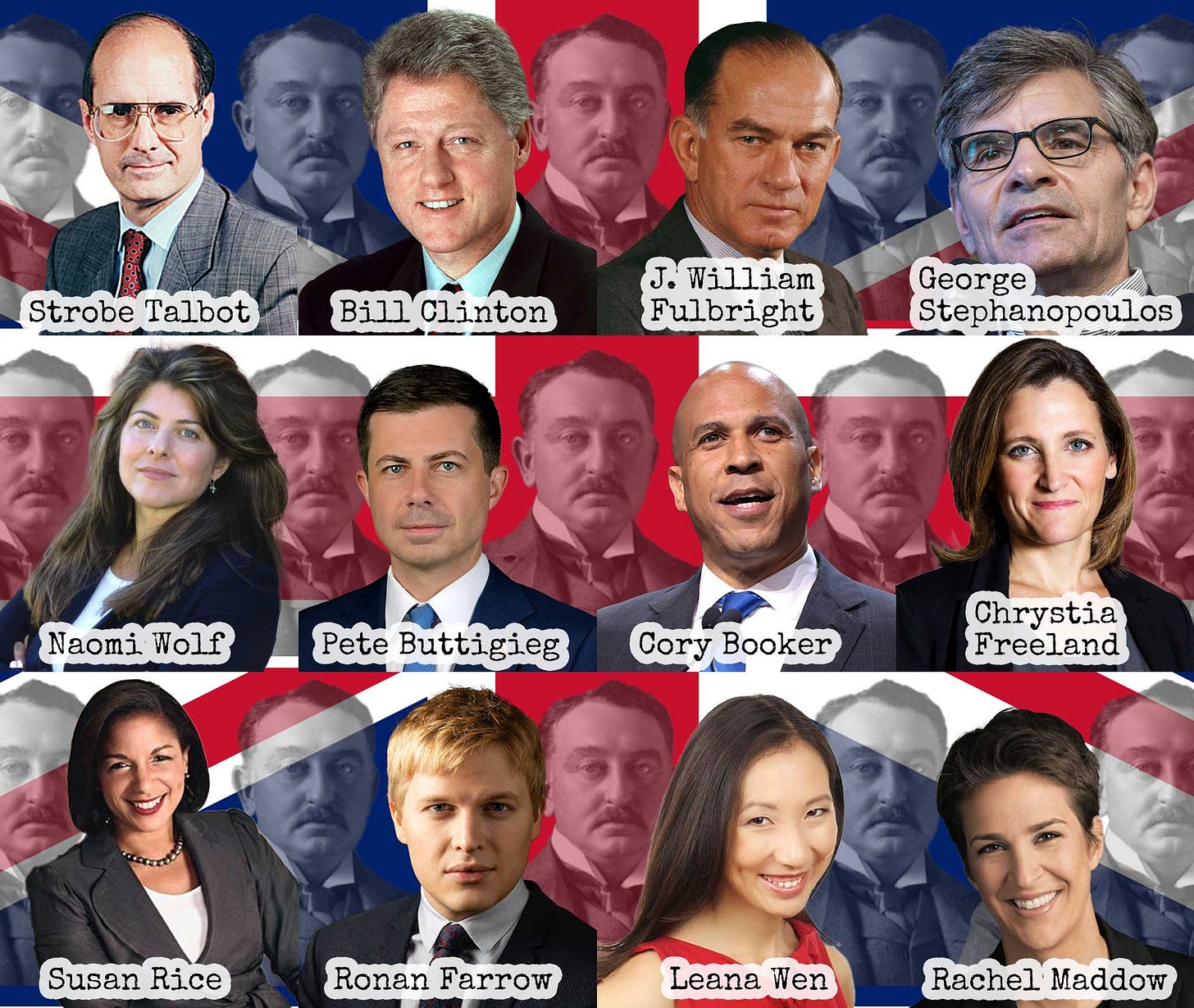Thanks to my readers' generosity, all my articles are free to access. Independent journalism, however, requires time and investment. If you found value in this article or any others, please consider sharing or even becoming a paid subscriber, who benefits by joining the conversation in the comments. I want you to know that your support is always gratefully received and will never be forgotten. Please buy me a coffee or as many as you wish.
Thalassocracy (θάλασσοκρατία or thalassokratia) is a form of dominion and influence achieved through control of the seas—encompassing maritime trade routes, naval power and economic reach across oceanic regions. A thalassocracy’s strength is rooted in its ability to project influence over distant territories without relying on extensive land-based conquest or territorial expansion. Instead, it operates primarily through maritime supremacy, trade networks, and economic influence, often shaping the policies and economies of coastal regions from afar.
In contrast, territorial empires achieve dominance through direct land-based conquest and governance, controlling regions by establishing physical and administrative presence across territories. Where thalassocracies rely on naval power and commerce to exert influence indirectly, territorial empires impose control through land armies, occupation, and governance structures, extending authority over land-based populations and resources.
For instance, the British Empire and Venetian Republic exemplify thalassocracies. They project power through naval dominance and economic influence, often embedding cultural and economic control within other states. In contrast, empires like Rome expanded primarily through land-based conquests and governance, integrating conquered territories directly into their administrative structures.
Therefore, a thalassocracy is characterized by strategic maritime control that extends influence globally, contrasting with the more localized, directly governed territories of a land-based empire.
Etymology of Thalassocracy
The term thalassocracy derives from:
Greek θάλασσα (thalassa): meaning “sea”
Greek κρατία (kratia): from κράτος (kratos), meaning “power” or “rule”
Thus, thalassokratia translates to “sea power” or “rule over the sea.” Historically, thalassocratic powers exert influence primarily by controlling maritime trade routes and naval dominance. The evolution of thalassocracy also includes covert influence through economic, cultural, and political infiltration, as evidenced by Venetian and later British strategies.
Historical Examples of Thalassocracy and Influence through Infiltration
1. The Ancient Minoans (circa 2000–1450 BCE)
The Minoan civilization on Crete exemplifies one of the earliest known thalassocracies. The Minoans exercised influence through goods like olive oil, wine, and pottery by establishing trade routes across the Aegean. Their reliance on naval power meant they required minimal land defenses.
The Minoan thalassocracy ended around 1450 BCE, likely due to natural disasters and Mycenaean invasion.
2. The Phoenicians (circa 1500–300 BCE)
The Phoenicians from city-states like Tyre and Sidon built an extensive maritime network, controlling Mediterranean trade and establishing colonies as far as Carthage and Spain. They dominated trade routes and influenced seafaring practices, cementing their role as key regional cultural and commercial contributors.
3. Athens (5th Century BCE)
Athens became a thalassocracy through the Delian League, which was formed initially to defend against Persia. By controlling league funds and requiring tributes, Athens expanded economically and culturally, fostering a “golden age.” However, Athenian dominance declined after the Peloponnesian War (431–404 BCE).
4. The Venetian Republic (697–1797 CE) and Influence on Britain
The Venetian Republic established a powerful Mediterranean thalassocracy, securing dominance through strategic alliances, sophisticated banking, and trade. Venice’s influence expanded to Britain, where it embedded oligarchic principles:
Francesco Zorzi’s Influence on Henry VIII: Zorzi’s role in England laid the groundwork for a Venetian-inspired faction, later promoting usury and oligarchic ideas. Paolo Sarpi influenced English thinkers like Francis Bacon, embedding empirical philosophy into British intellectual life.
This Venetian infiltration culminated in Britain’s establishment of the Bank of England in 1694. The Bank was a privately controlled institution with vested interests aligned with Venetian financial strategies. The Bank introduced a national debt model, supporting wars and colonial expansion. This transformation shaped Britain into a Venetian-style financial and maritime empire, positioning it to influence global trade and finance for centuries.
5. The British Empire (17th–20th Centuries)
Britain’s thalassocracy spanned the globe, enabled by the Royal Navy and the financial power of the Bank of England. Through control of trade routes and colonies across the Americas, Africa, Asia, and Oceania, Britain enforced its economic and strategic interests worldwide.
During the 19th century, Lord Palmerston exemplified British strategy, using covert support for nationalist revolutions to destabilize European rivals like Austria and Russia. The Venetian-inspired financial structure allowed Britain to secure a global empire, maintaining dominance through military power and economic control.
6. The Anglo-American Empire (post-WWII) as a Reconfigured British Empire
Britain’s direct colonial power waned post-WWII, but covert cultural and financial influence persisted, creating an Anglo-American Empire. Stockholders from the Bank of England and other foreign interests covertly influenced the creation of the Federal Reserve and the Internal Revenue Service (IRS); this transformation reflects a continuation of Venetian-inspired financial strategies in American institutions, embedding British interests into U.S. economic policies.
Anglo-American Financial Control
The Anglo-American Empire operates through carefully integrated financial systems to exert covert influence in U.S. economic and regulatory structures, enabling the ‘Venetian Party’ British and their oligarchic relations by their controlling interests (stock) in banks that control and manage sovereign debt.
Covert Establishment of the Federal Reserve:
The Federal Reserve, established in 1913, was a pivotal institution modeled on the Bank of England’s structure. The Bank of England, Wall Street, and other European shareholders covertly influenced its creation. The Federal Reserve serves Anglo-American financial interests, aligning U.S. monetary policy with a non-U.S. global financial agenda. Its quasi-private structure mirrors that of the Bank of England, allowing British financial elites to indirectly shape American financial policies.IRS and Income Tax Introduction:
The IRS, established shortly after the Federal Reserve, reinforces control over American economic productivity through federal income tax. Influenced by British and other foreign interests, the IRS ensures a steady revenue stream to support the debt obligations and interests of a shared Anglo-American financial network. This tax structure effectively aligns the American economy with the financial objectives of the British and other foreign stakeholders. In other words, it bleeds American taxpayers by guaranteeing American interest payments to British and American oligarchs and other foreign stockholders.Interconnected Financial Systems:
Post-WWII, British and American financial systems became tightly interwoven. Through institutions like the Bank of England and the financial center in the City of London, the World Bank, the International Monetary Fund, and the Bank of International Settlements, British interests influence Wall Street and the U.S. Federal Reserve. This interconnected network enabled British elites and American financiers to pursue shared objectives, fostering an Anglo-American financial alliance that shaped global economic policies.
Cultural Influence and Educational Diplomacy:
Programs like the Rhodes Scholarships and the Pilgrim Society promoted pro-British perspectives among American elites, creating a cultural framework that reinforced financial and strategic cooperation. This soft power aligned American leadership with British interests, subtly advancing a shared Anglo-American identity.
Intelligence and Covert Influence:
The Five Eyes Alliance, comprising the U.S., the UK, and other Anglo-aligned nations, facilitated intelligence sharing that reinforced Anglo-American strategies. In close partnership with the CIA, British intelligence networks allowed Britain to shape American foreign policy and global priorities.
This Anglo-American Empire, where British influence extends through financial and regulatory systems in the United States, represents a reconfigured British Empire. Through the Federal Reserve and IRS, British financial control quietly persists, enabling an alliance that shapes global trade, finance, and policy based on shared Anglo-American interests.
Timeline of Thalassocracies and Influence through Infiltration
Ancient Minoans: Early Aegean dominance through trade.
Phoenicians: Widespread Mediterranean network influencing trade and culture.
Athens: Delian League’s Aegean dominance, showcasing the strategic value of naval power.
Venetian Republic: Dominated Mediterranean trade and embedded oligarchic structures in Britain, leading to the creation of the Bank of England.
British Empire: Global maritime empire extending Venetian-inspired financial and strategic influence, culminating in a partnership with the U.S.
Anglo-American Empire: Reconfigured British Empire using the Federal Reserve, IRS, and financial integration to perpetuate Anglo-American control in a post-colonial world.
Conclusion
This evolution in maritime power and economic infiltration has sustained influence. The Anglo-American Empire, as underpinned by the British ‘Venetian Party’ and other foreign stockholders’ influence in the Federal Reserve and IRS, would embody a modern thalassocracy using financial and covert methods rather than direct rule. This enduring Anglo-American covert relationship continues to shape geopolitics, with American institutions subtly reflecting British financial objectives through deep-rooted integration.












Those early Navies required a lot of hemp for sails, line, and Sailor's clothing. Wars were fought, countries vanquished, and people enslaved to just cultivate vast hemp fields and make those items.
Modern ships, of course, do not need as much hemp, however, they are obsolete because of China's hypersonic surface-to-surface Silkworm missile. The story is here: Thread of the Silkworm, Iris Chang, 2008. https://archive.org/details/threadofsilkworm00chan
Then we have those sneaky Swedish submarines to contend with. https://nationalinterest.org/blog/buzz/how-100-million-swedish-submarine-sunk-6-billion-us-supercarrier-208833